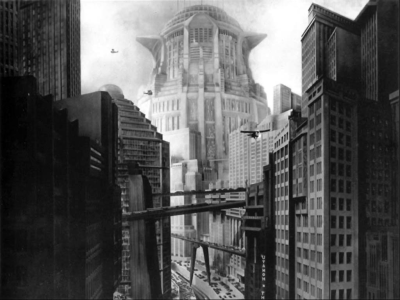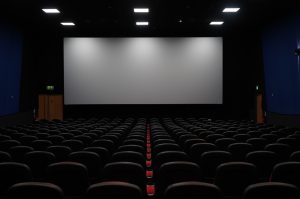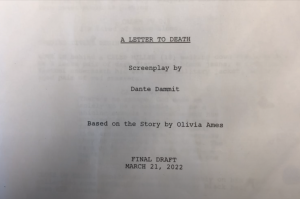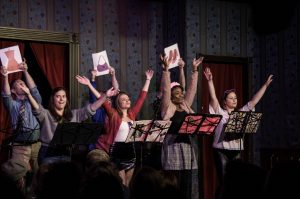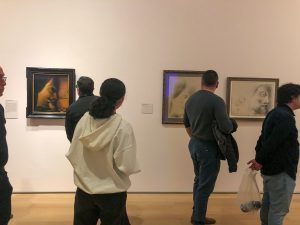
Charlie Chaplin, Greta Garbo, Rudolph Valentino and Lillian Gish. For today’s younger movie fans those names may not mean much, but during the silent film era they were among the most popular names in the movies and at the peak of their careers were adored by millions of fans
Their work can still be appreciated today though thanks to the Silent Film Society of Chicago, which started in 1998 and is best know for their Summer Film Festival.
With as many as 300 members, the Silent Film Society of Chicago wants to draw attention to the art form of silent movies, for preservation purposes, by presenting these films as authentically as possible in a large auditorium and with a live musical score.
Dennis Wolkowicz, the program director for the society, believes the music is an equally important aspect in presenting silent movies to the public.
Over the years, for many silent movies, a jazz or rock score would be played during the movie and while musically it may be good, Wolkowicz said, “over all the accompaniment is inappropriate.” The society will try to find the original score for movies or will compose an original score in the style of the time period and more faithful to the director’s intention.
Although they have the objective of introducing silent films to a wider audience , Wolkowicz stated the unofficial motto is “to educate a little and entertain a lot.” Wolkowicz continued, “You can get overly academic and we didn’t want to do that. We look at it as entertainment.” Still Wolkowicz observed silent films as one of the art forms we can go back and trace its history. “It is important we know it and recognize it is the roots of modern cinema,” he said.
Unfortunately far too many young movie fans ignore the classic works of silent film. Many people are reluctant to explore the work of Fritz Lang, D.W. Griffith and F.W. Murnau because they feel silent films are boring and too old-fashion. Plus, there is the fact they are silent and we are used to watching motion pictures with sound. A lot of people believe with the lost of sound the movies themselves lose something and aren’t fully able to communicate their ideas to a wide audience.
Of course this simply is not true. The history of silent film is rich. The movies are filled with memorable images, because that was the only way they could tell a story – by images. Watch “Metropolis” (1927) and see the influence it had on “Star Wars” (1977) , “Blade Runner” (1982) and Gotham City in Tim Burton’s “Batman” (1989). Watch “Battleship Potemkin” (1925) directed by Sergei M. Eisenstein, released to celebrate the 20th anniversary of the Revolution of 1905, and see how Brian De Palma “borrowed” a scene for his movie “The Untouchables” (1987). See how “The Big Parade” (1925) set the standard for all war films which followed.

The society doesn’t actively recruit members and most people that attend screenings come out of curiosity. Depending on the venue, Wolkowicz said, will dictate the age of their crowds. In the city, more younger people between 25-40 come out, and in the suburbs senior citizens are usually in attendance. One of the more memorable moments Wolkowicz recalled was during their summer festival for a screening of the Harold Lloyd comedy “Safety Last” (1923), featuring one of the most iconic images in all of silent film comedy, Lloyd dangling outside of a building onto the hands of a clock several stories high. The film was introduced by Lloyd’s granddaughter Suzanne with 1,800 people in attendance.

In recent years silent films have been in the news with the release of pictures such as “The Artist” (2011) directed by Michel Hazanavicius, which scored a total of 10 Academy Award nominations and won five including best picture, best directing (Hazanavicius) and best actor (Jean Dujardin), and the Spanish silent film released last year “Blancanieves” (2013) went on to win several film festival awards and won 10 Goya Awards. The Silent Film Society of Chicago even screened “The Artist” as a bonus at their summer festival.
Just in time for Halloween, the society has decided to have a Silent Horror Film Festival, taking place October 12-14 at the Portage Theater, located at 4050 N. Milwaukee. Scheduled for screening will be “The Phantom of the Opera” (1925) starring Lon Chaney, “The Hands of Orlac” (1924) with Conrad Veit (best known for his role in “Casablanca” (1942) with Humphrey Bogart) and “The Monster” (1925) also with Lon Chaney. According to Wolkowicz these last two movies may not have been screened for audiences in Chicago for more than 30 years.
To find more information about the Silent Film Society of Chicago and how to become a member visit their website at http://silentfilmchicago.com/.

